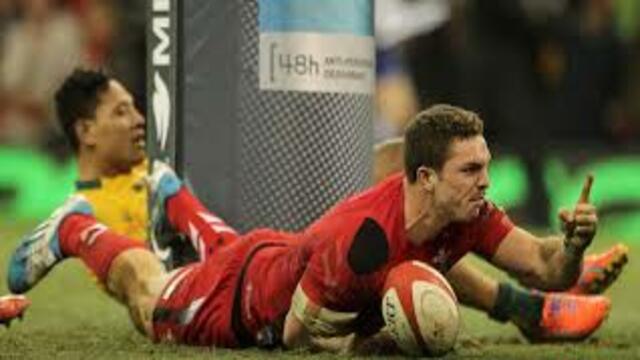Reviewing the Autumn International – Part 1
In a recent article on the BBC Wales Sport website Richard Williams raised the issue of perception versus reality regarding Wales’ performance during the Autumn Internationals. Wales had a 3-1 record, something that they have not done since 2002. While on paper that result does look good, especially the win against South Africa, realistically Wales’ performance was not as strong as those results suggest.
To be able to review what has transpired over the last month it is important to understand how the teams are viewed and what are the actual measurable drivers of performance. As the opening paragraph suggests just looking at each team in isolation does not give a true reflection on their realistic performance, only a perception of performance.
Understanding the power of perception and what cause it is the first step in understanding a team’s actual ability to perform. In isolation the Wales victory over South Africa looks fantastic, but placing it in a historical context shows it in a different light. The key to evaluating and predicting how teams are currently performing and can perform in the future is to put their performance into context over time. This was why I was able to confidently say on national television in Australia that Ireland had a significant opportunity against the All Blacks in Chicago and that the betting market (one of the best examples of performance perception) was way off the mark.
There are many examples of perception being a significant driver of how teams are expected to perform. The 1980 Winter Olympics Ice Hockey USA vs. USSR semi-final has gone down in history as the “Miracle on Ice”. This game is a classic case study in perception. The USA team made up of college players were up against the might of the USSR professional players, who in the lead up to the Olympics thrashed the NHL all-stars in a pre-Olympic game. What about the (now not as famous as it once was) Munster victory over the All Blacks in 1978. How could a provincial team beat the mighty All Blacks when Ireland’s National team had not been able to? Both these games are so legendary that they made a movie and stage play out of them.
How could a group of college kids beat a team made up of professional players and how could a club team beat the All Blacks? A way to answer the question is to understand how each team is perceived. The general assumption of how teams perform is based around the skill of the players and the quality of coaching. If the players are skillful and the coaches are good then the team should perform well – right? No, not always. There is a third element that needs to be considered when looking at team performance and that is Cohesion. As discussed in previous articles, Cohesion significantly impacts performance.
When looking at the two games mentioned above, the assumption is that the skill levels of the USSR professional ice hockey players and the All Blacks were greater than their respective opponents. The same logic can be used when looking at the Japan/South Africa result in the last Rugby World Cup or the Iceland/England result at Euro2016. The skill level of the players may well have been different but what has not been considered is the Cohesion of the teams. Normally when these anomalous results occur people go looking for answers and nearly always in the wrong place – the winners have great “culture”, the loser’s look to blame individuals.
So why were the results unexpected? Consider this; A USSR team of professionals brought together for the Olympics will have very little cohesion. The extremely limited measure of their performance prior to the Olympics was a game against an NHL All-Star team with virtually no cohesion. This was a skill vs. skill shootout between the USSR and NHL leading to a 6-0 victory which to the general public made the USSR look very good. However, come the Olympic semi-final they came up against the USA Olympic team who played 61 games together prior to the Olympics. It wasn’t skill that won that game but cohesion. The same can be said for Munster vs. the ALL Blacks. Munster with all their playing time together vs. a mid-week All Blacks team with little cohesion. These are extreme examples of skill vs. cohesion. While at international and club rugby level the differences are not as dramatic, the mechanics operate in the same way to create measurable advantages and disadvantages for teams.
Playing time is only one of the factors when it comes to developing cohesion and how it is measured. There are a number of different elements that come together to create and maintain cohesion in a team. Within a national team there are different sources of cohesion which are impacted by the national team itself and by the club structure the players are being selected from.
By being able to measure the impact of cohesion you can therefore take away the fog of perception around performance. This is what we do at GAIN LINE Analytics.
Next week we will look at how the Home Nations have performed during the Autumn series by striping away the preconceived notions and misconceptions around their performances. Who has peaked, who still has room for improvement and who is on the slide.


